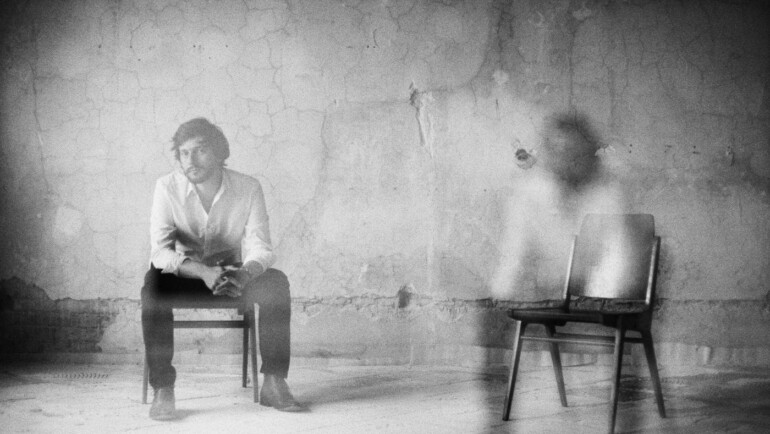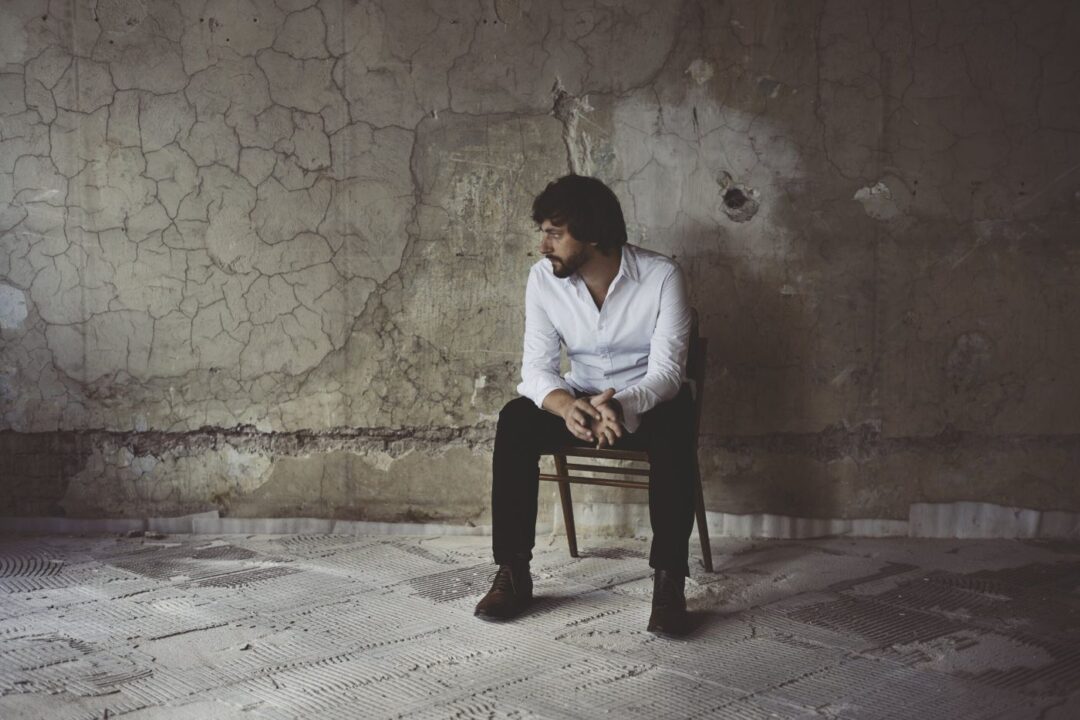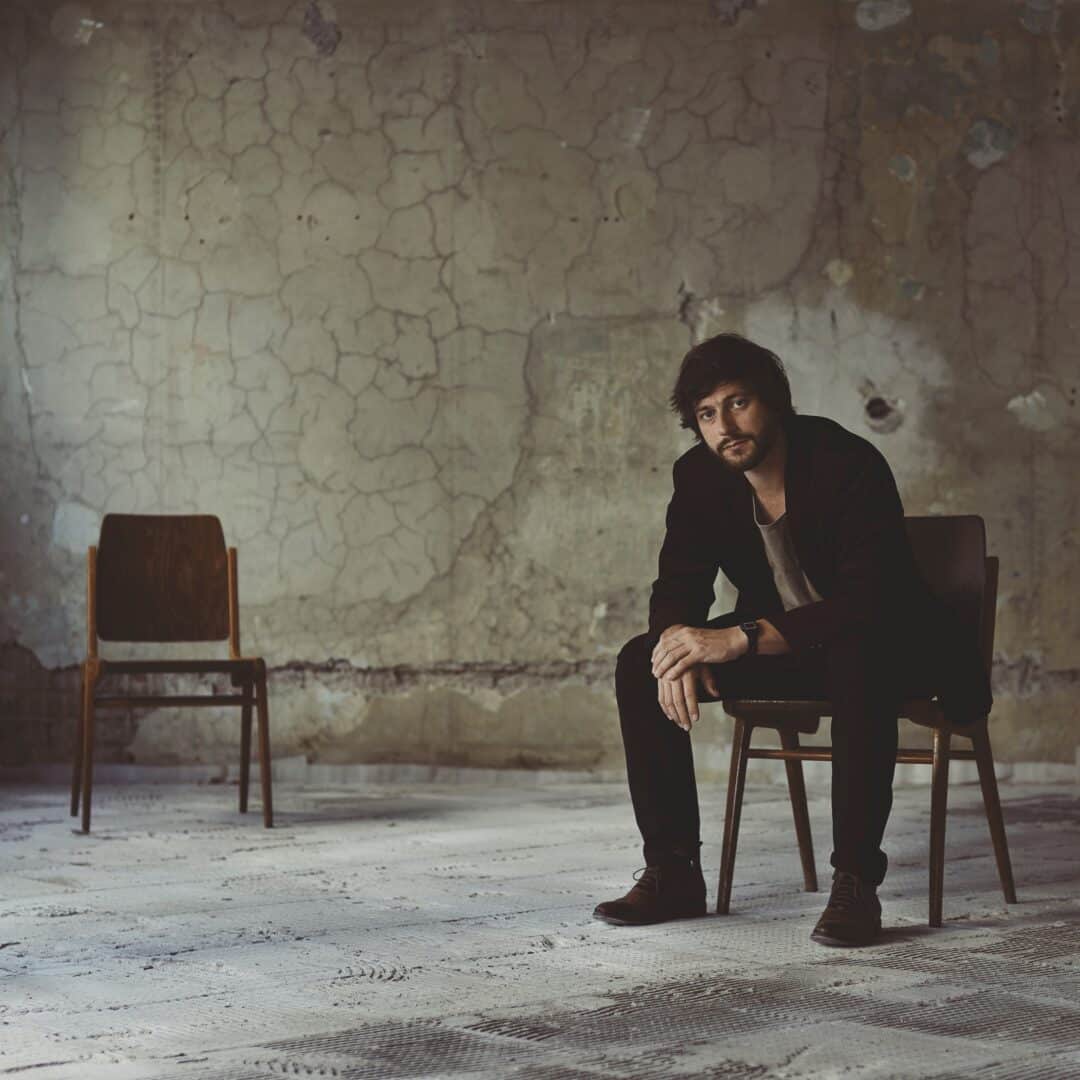
Simon Raab is known primarily as the leader of the band Purple Is The Color. Now, the album those things falling (Edition Ö1) features the pianist for the first time as a solo artist – in the truest sense of the word: the only sounds to be heard on the album are those of his piano…but there’s no need for anything else. Michael Ternai spoke with Raab about the happy circumstances surrounding the release, the quest for his artistic essence, and freeing himself from perfectionism.
“The right doors open up”
People mainly know you as the leader of Purple Is The Color. What made you want to record a solo album?
Simon Raab: I’ve been considering making a solo album for quite some time. Keith Jarrett was probably my original inspiration; I have a lot of respect for his work. He inaugurated a new era in the solo piano genre, and he influenced a lot of people. The process began last summer, when a few fortunate circumstances came together: I had been looking for a grand piano for quite some time – I had been playing an upright, but I come from classical piano and it never really felt right. Then, in July 2022, a used Yamaha C3 went up for sale at Klavierhaus Schimpelsberger, for a very good price. My first reaction was naturally “wow,” but I didn’t want to make any rash decisions; the instrument really had to be right for me.
I went to the showroom with my former teacher from Linz, Andreas Thaller. I had them get five pianos in similar price classes ready – one of them was the Yamaha – then I had them blindfold me, and Andreas guided me from piano to piano. Now and then, he’d sit down at another piano and we’d play together for a while. Finally, I stayed sitting at one piano and thought: this one sounds different. It’s reacting just the way I’d like it to. I can modulate the tone really well, and I’m just really enjoying playing these keys – when you’re blindfolded, the feeling suddenly plays a huge role. I was secretly hoping that that piano would turn out to be the C3 – and when I took the blindfold off, it was. So I bought it.
Then, the producer David Furrer offered to let me put the piano in the studio in his studio – so I suddenly had a working space whenever no one was in the studio recording. Naturally, I took advantage of it as much as possible. It was a great atmosphere to work in, and David and I got to be good friends as well; I realized quickly that I wanted to record the album with him. I had reserved another studio already, but I wanted to have a really intimate atmosphere for my debut.
Soon after that, Andreas Felber offered me the chance to release the album on Edition Ö1 – so in sum, a lot of great things happened that gave me the feeling that it’s right. Of course, it all involves a lot of work, but when you keep at it, the right doors open up. It was similar with Purple is the Color. You have to go through the open doors and put a lot into it, but it’s worth it in the end.
“You can only touch people if you’re honest”
It does sound like a lot of wonderful coincidences. How did you approach it musically?
Simon Raab: I took a course last October on the recommendation of Eva Klampfer [aka LYLIT], with the Berlin actor and acting coach Kristian Nekrasov. It was about getting the essence out of oneself as an artist and the question of what someone is really saying. We were a group of eight people, and I was the only instrumentalist. I had a keyboard with me and played something, and Kristian Nekrasov really put me through the wringer after that – but I realized a number of things. When you play an instrument for a long time, at some point you reach a high level, but a lot of people are on that level. What matters is less the level or technique than whether you can bring what’s in your heart out of you, communicate it to other people. You can only touch people if you’re honest and authentic.
In any case, you’ve moved well outside of your comfort zone with this solo album. In spite of all the challenges, did you find it liberating to be able to work completely differently for once?
Simon Raab: Good question. I was able to practice in the studio, and I had ten days to record the album – those are luxuries you don’t have with a project involving other people. I’m blessed with a lot of compositional ideas, but the challenge is, every idea opens into a whole universe. What direction should I develop it in when there are so many possibilities? Before this album, I never realized that it’s about decisions. I had a lot of time, but then it always grew short because I had left so many things open for so long. One thing I learned recording the album was that making a decision is something positive – and I’m still learning it.
I talked to a lot of people who are important to me – for instance, Christoph Cech, my former teacher at the Anton Bruckner University [in Linz]. We talked a lot about composition and music in general; that was a great help. I also discovered that there’s a lot inside me that I can’t yet grasp. When I was making the album, I read an interview with the pop artist Chet Faker, who said, “it’s about sharing your journey.” You’re never going to get to the point where everything is finished, but I still held on to this idea that everything had to be perfect. That’s nonsense, and it’s not authentic. It’s about showing people – especially yourself – who you are at the moment: this is who I am musically in 2023. Next year, I might be somewhere else.

“You have to let things out”
That sounds difficult, letting go of your own perfectionism.
Simon Raab: Obviously, it’s a huge challenge. Especially for someone like me; I have a really strong perfectionist vein. But it’s utterly necessary, and that necessity has become clearer and clearer to me. That was also a subject in the course with Kristian Nekrasov: that you have to just let things out. I see that as the most important task in my next projects.
How did you approach the pieces, bring them to life? How concrete were your ideas?
Simon Raab: The ideas for the pieces were there pretty quickly; the question was more, where they should go. David Furrer was really important here: during the recording sessions, he sat right next to me part of the time; really worked with me. It reminded me very strongly of the time with my piano teacher, Andreas Thaller – the one who tested the pianos with me. He really engaged with me – he would often conduct or sing along with me in the lesson. He was always pushing me, and he was pretty strict sometimes, but he got a lot out of me, helped me really experience music.
I’ve actually never had anything like that since – but that’s exactly how David worked with me. He kept asking me why I’m playing exactly that, what it is that I’m trying to say. And he often said that this should be softer and that louder, so that the whole thing develops. It was the work of a producer through and through, more akin to a pop production. It was really touching and motivating. The recording sessions were insane; they often went from morning till after midnight. At the end of the day I was exhausted, and I’m sure David was as well. But I like it when things are intense; it’s fulfilling.
“It’s delicate work”
What were the inspirations for the album?
Simon Raab: Musically, solo piano has always fascinated me, so Keith Jarrett is a huge role model, as I mentioned already – so much so that it’s almost unnerving. To research, I put together a playlist with all kinds of different solo music, ranging from oldies like Thelonious Monk and Art Tatum to people like Aaron Parks, Brad Mehldau, and Tigran Hamasyan.
Solo piano fascinates me because you can speak so directly. One important reason for buying the Yamaha C3 was that I started focusing intensively on my sound again in practicing; I think I’ve made a lot of progress in that respect. The piano is so puristic – it has 88 keys, more than any other instrument, but the way the tone develops is absolute. If you make a mistake, you can’t cheat by modulating the tone afterwards. Improvised music is a real-time thing; you have to know a fraction of a second beforehand how you’re going to voice something. It’s enormously attractive to me to work like that. It’s delicate work; it has a lot to do with conception – and here we come full circle: what do I want to say? How do I want something to sound? You can present the same idea in so many different ways.

Speaking of improvisation: how much of it is there on the album?
Simon Raab: The interludes are completely improvised. With the rest, it’s mixed – “Blues” and “David” are pretty through-composed, for instance.
What have you learned from this solo project that you can apply to other projects?
Simon Raab: A lot of different things, but most of all to trust in the process. To be honest, I had moments of panic, where I seriously started to doubt – but in the end, everything went the right direction. Making decisions definitely helped, there’s no way around it. You have to accept that it means some ideas will be discarded. And I’m going to try to doubt my decisions less in the future – I know I have enough ideas; I just need to pursue them, and something will come of it.
Thanks for the interview!
Michael Ternai, translated from the German original and edited by Philip Yaeger.
- Simon Raab will be performing solo at Kick Jazz on Wednesday, December 6th, at Porgy & Bess.
